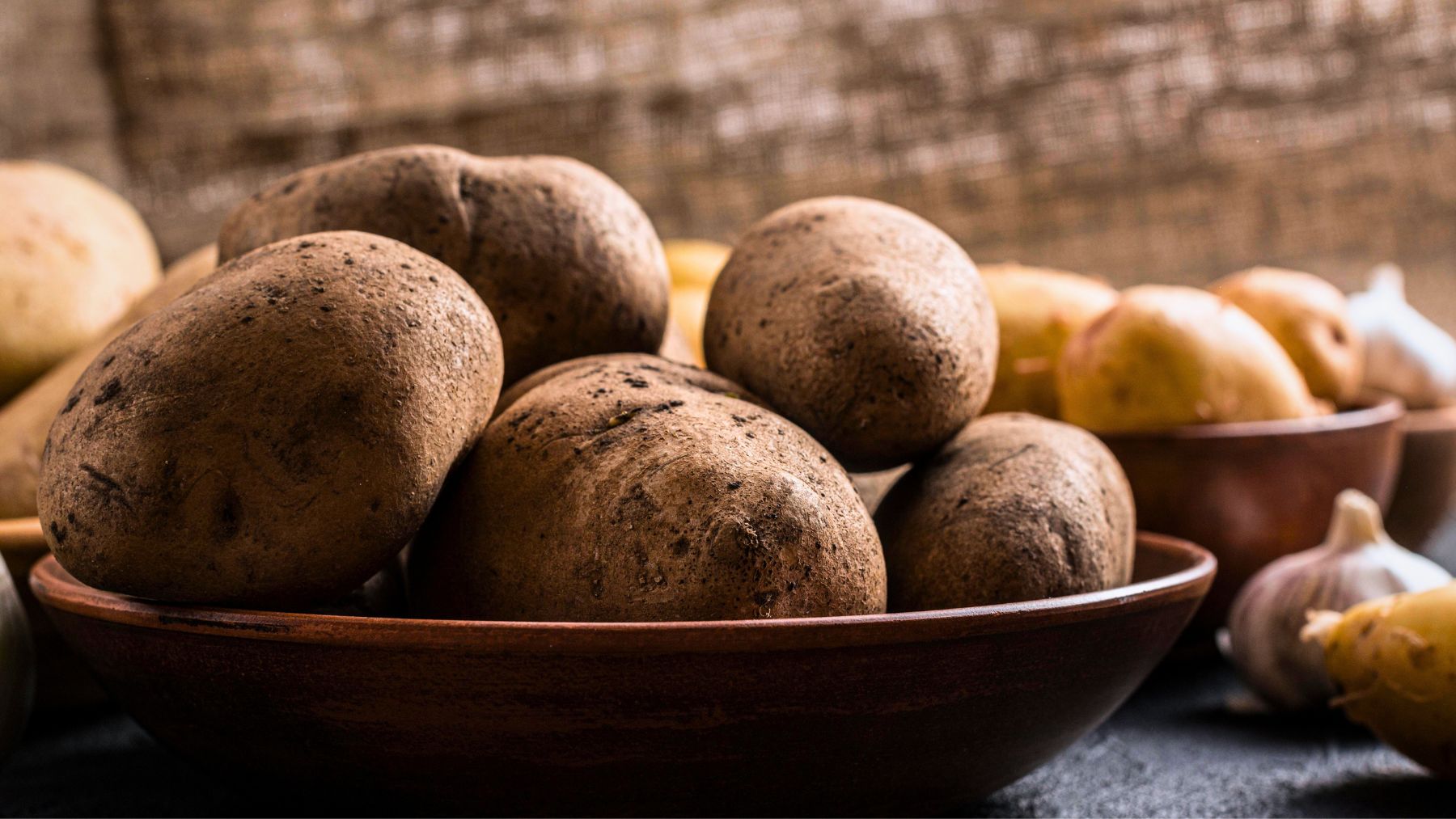Storing potatoes the wrong way can shorten their shelf life and ruin their flavor. Many people leave them in the fridge or leave them in the fruit bowl, but neither of those spots is doing your spuds any favors.
The best place to store potatoes is a cool, dark, well-ventilated area, like a pantry. That environment helps prevent sprouting, soft spots, and that telltale green tint that means it’s time to toss them. Here, we’ll cover why the pantry is ideal, and we’ll walk through key tips to help your potatoes stay fresh longer.
The best place to store your potatoes
Potatoes don’t belong in the fridge. Cold temperatures—especially anything below 45°F—turn the starch in potatoes into sugar. That sugar affects the texture and flavor, and it can even cause them to brown too quickly when cooked. On the other hand, warm or sunny spots, like countertops or windowsills, can speed up sprouting and spoilage.
That’s why the pantry is your best bet. A pantry, basement, or even a dark closet works if it stays between 45°F and 55°F and has decent airflow. Potatoes do best in a cool space that’s protected from light and humidity but isn’t sealed up tight. They need to breathe. A basket, mesh bag, or open bin allows for ventilation and helps prevent rot.
It’s also important to keep them away from ethylene-producing foods like bananas, apples, and tomatoes. Ethylene gas triggers faster ripening and sprouting, which means your potatoes won’t last as long. The same goes for onions—they release moisture and gas that can spoil potatoes faster if stored together.
How to keep potatoes fresher longer
Storing potatoes properly starts with picking the right ones and knowing what to avoid. Here are the essential tips:
- Choose good ones from the start: Look for firm, unblemished potatoes without cuts, bruises, or green spots. They should feel heavy for their size and have dry skin.
- Keep them dry: Don’t wash your potatoes before storing them. Instead, brush off any loose dirt and leave the skins dry. Only wash them right before you plan to use them.
- Use breathable containers: Avoid plastic bags or sealed containers. Instead, use a mesh bag, basket, paper bag, or open box. This allows air to circulate and reduces moisture buildup.
- Check them regularly: Inspect your potatoes every week or two. Remove any that are sprouting, soft, moldy, or green to prevent the rest from going bad.
- Don’t refrigerate unless you have the right setup: A typical fridge is too cold for potatoes. But if you have a drawer or fridge setting that stays around 50°F and maintains low humidity, it can work for short-term storage.
- Store sweet potatoes separately: They like similar conditions but don’t store as long. Keep them in the same kind of environment, but in a separate basket or bin.
With the right setup and a little attention, your potatoes can stay firm and usable for weeks. Skip the fridge and give them a dark, cool spot to rest. It’s a simple shift that cuts waste and keeps your meals tasting better.

